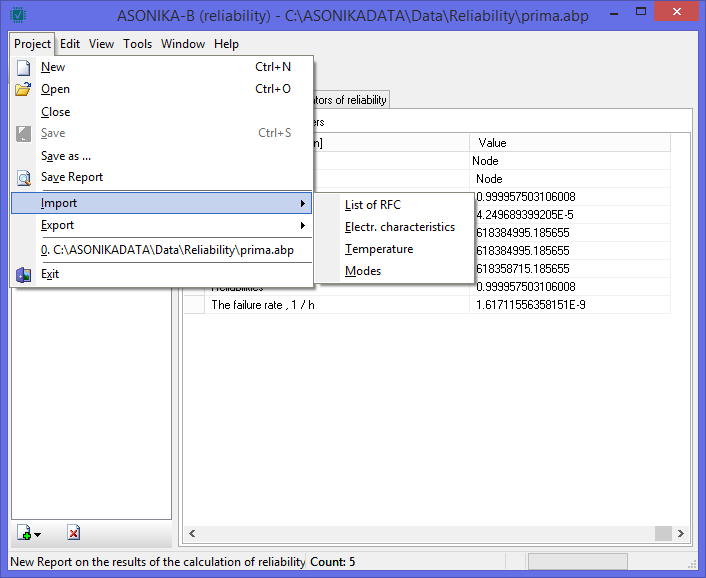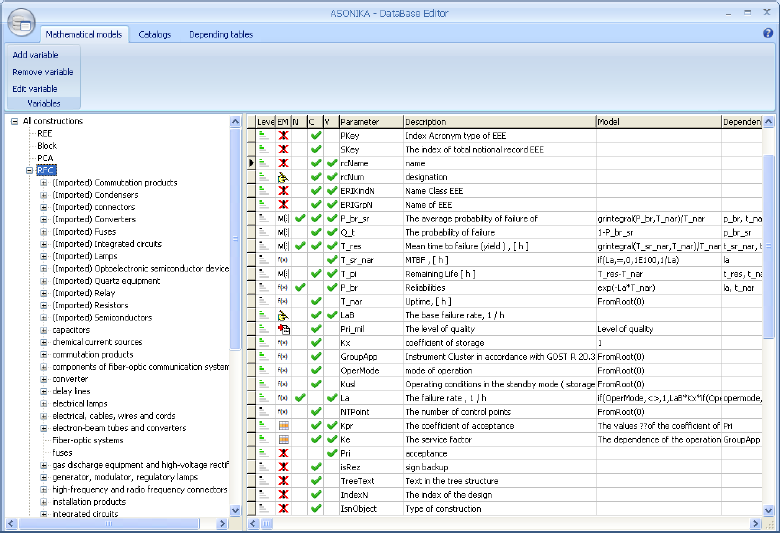SYSTEM AND COMPONENT LEVEL RELIABILITY ANALYSES OF RADIO-ELECTRONIC MEANS, ACCOUNTING FOR REAL OPERATING CONDITIONS OF RADIO-FREQUENCY COMPONENTS
Perform the analysis of cabinets, blocks, printed circuit assemblies, radio-frequency (RF) components, as well as:
1) determine reliability values for all RF components;
2) substantiate the need and the evaluation for the redundancy in radio-electronic means (REM).
Following types of redundancies (without repair) can be calculated (in accordance with the RADC-TR-77-287 A Redundancy Notebook):
1) full on redundancy (single unit necessary for survival);
2) full on redundancy (multiple units necessary for survival);
3) standby redundancy with ideal switch (single unit necessary for survival);
4) standby redundancy with ideal switch (multiple units necessary for survival);
5) standby redundancy with non-ideal switch (single unit necessary for survival).
As a result, the following simulation results are obtained: REM operational failure rates, probability of a failure-free operation, and mean time before failure.
The following support can be included in the calculations:
1) database with mathematical models which takes into account calculated operational failure rates of RFCs and coefficient values included in the model;
2) database editor to fill-in various descriptions of the RF components as well as edit every coefficient value and mathematical model.
Features and benefits:
1) import design data from other electronic CAD tools;
2) import thermal and electrical RF components properties from other packages;
3) use of one common database. The database will contain not only data necessary for reliability calculations, but also for thermal and mechanical analysis;
4) mathematical models that are used for reliability calculations are not part of the source code, but are stored in a symbolic form in the subsystem database. This allows to easily edit and create mathematical models using the database editor.



